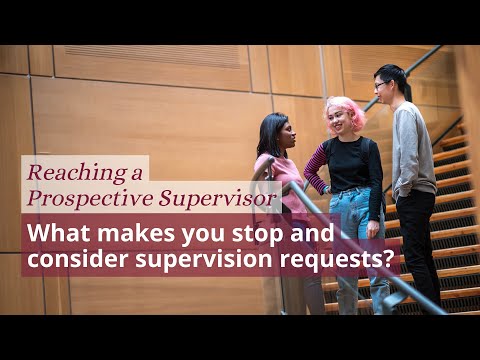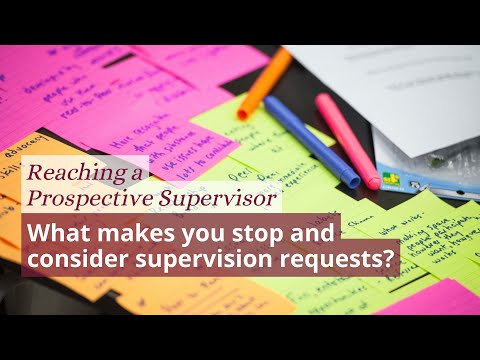Claudio Vellutini
Research Classification
Research Interests
Relevant Thesis-Based Degree Programs
Affiliations to Research Centres, Institutes & Clusters
Research Options
Recruitment
Complete these steps before you reach out to a faculty member!
- Familiarize yourself with program requirements. You want to learn as much as possible from the information available to you before you reach out to a faculty member. Be sure to visit the graduate degree program listing and program-specific websites.
- Check whether the program requires you to seek commitment from a supervisor prior to submitting an application. For some programs this is an essential step while others match successful applicants with faculty members within the first year of study. This is either indicated in the program profile under "Admission Information & Requirements" - "Prepare Application" - "Supervision" or on the program website.
- Identify specific faculty members who are conducting research in your specific area of interest.
- Establish that your research interests align with the faculty member’s research interests.
- Read up on the faculty members in the program and the research being conducted in the department.
- Familiarize yourself with their work, read their recent publications and past theses/dissertations that they supervised. Be certain that their research is indeed what you are hoping to study.
- Compose an error-free and grammatically correct email addressed to your specifically targeted faculty member, and remember to use their correct titles.
- Do not send non-specific, mass emails to everyone in the department hoping for a match.
- Address the faculty members by name. Your contact should be genuine rather than generic.
- Include a brief outline of your academic background, why you are interested in working with the faculty member, and what experience you could bring to the department. The supervision enquiry form guides you with targeted questions. Ensure to craft compelling answers to these questions.
- Highlight your achievements and why you are a top student. Faculty members receive dozens of requests from prospective students and you may have less than 30 seconds to pique someone’s interest.
- Demonstrate that you are familiar with their research:
- Convey the specific ways you are a good fit for the program.
- Convey the specific ways the program/lab/faculty member is a good fit for the research you are interested in/already conducting.
- Be enthusiastic, but don’t overdo it.
G+PS regularly provides virtual sessions that focus on admission requirements and procedures and tips how to improve your application.
ADVICE AND INSIGHTS FROM UBC FACULTY ON REACHING OUT TO SUPERVISORS
These videos contain some general advice from faculty across UBC on finding and reaching out to a potential thesis supervisor.
Supervision Enquiry
Graduate Student Supervision
Doctoral Student Supervision
Dissertations completed in 2010 or later are listed below. Please note that there is a 6-12 month delay to add the latest dissertations.
Pablo Casals (1876-1973) ranks amongst the most influential figures in the history of the violoncello. Casals never held a permanent teaching position, neither did he commit his teaching philosophy to paper. This thesis examines three selected aspects of expressive tools: intonation, vibrato, and portamento – as interpreted by Casals – and defines how they are reflected in methods of two cellists with first-hand access to Casals's knowledge: Diran Alexanian (1881-1954) and Maurice Eisenberg (1900-1972). The first chapter presents two extensive biographical accounts of these authors. Alexanian taught at the École Normale de Musique and was succeeded by his student Eisenberg. Both cellists spent their later careers teaching in the USA. Their relationship to Casals is discussed as well: Alexanian was Casals's trusted colleague, while Eisenberg his favourite student. Alexanian's method Traité théoretique et pratique du violoncelle was published in 1922 and Eisenberg's Cello Playing of Today first appeared in 1957. All subsequent chapters contain a historical overview of the expressive tools under consideration, how Casals contributed to their development, and how the methods of Alexanian and Eisenberg discuss Casals's contributions. Each chapter contains a critical discussion of the tools' applicability to the playing of today. The second chapter provides an analysis of Casals's expressive use of intonation, discusses its practical relevance and how it is often erroneously taken for a tuning system. The third chapter introduces how vibrato developed from an occasional ornament to a crucial component of sound production and how Casals brought the "continuous vibrato" to cello playing. The fourth and final chapter offers a detailed discussion of Casals's right-hand technique and his use of portamento. My research demonstrates that not all of the content of Alexanian's method identifies with Casals's ideas – Alexanian never studied with Casals and had his own strong views. Alexanian's treatise, however, forms a bridge between two different eras, before and after Casals's hugely influential contribution to cello playing. In comparison, Eisenberg's method is in total accordance with Casals's ways of playing and his presentation of methodology is more comprehensive. Eisenberg's method presents the definitive written legacy of Casals's ideas.
View record
If this is your researcher profile you can log in to the Faculty & Staff portal to update your details and provide recruitment preferences.


